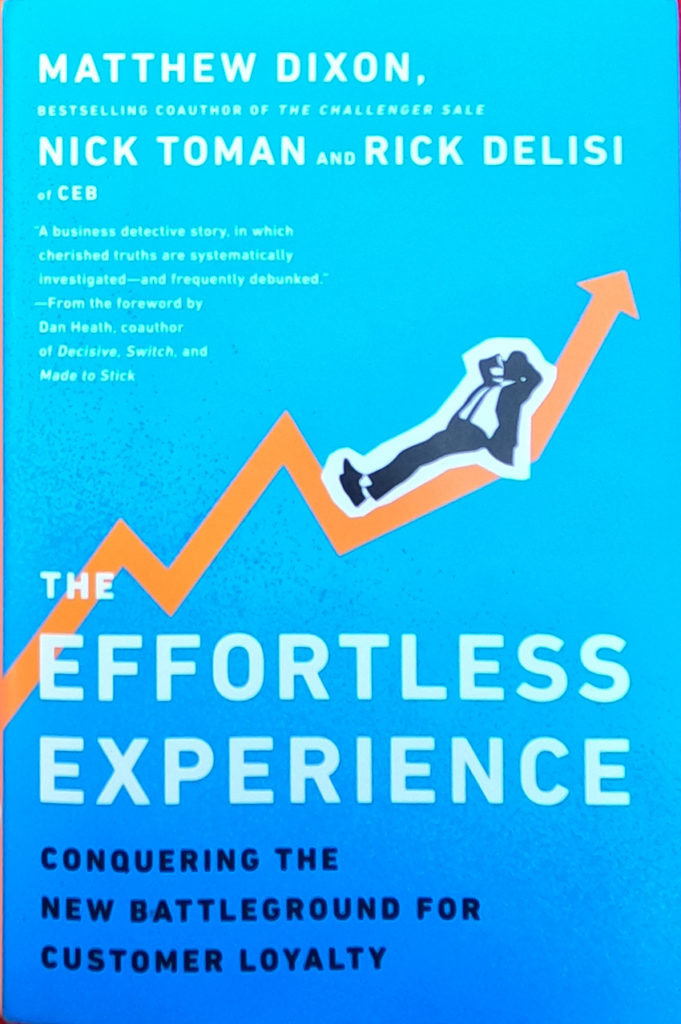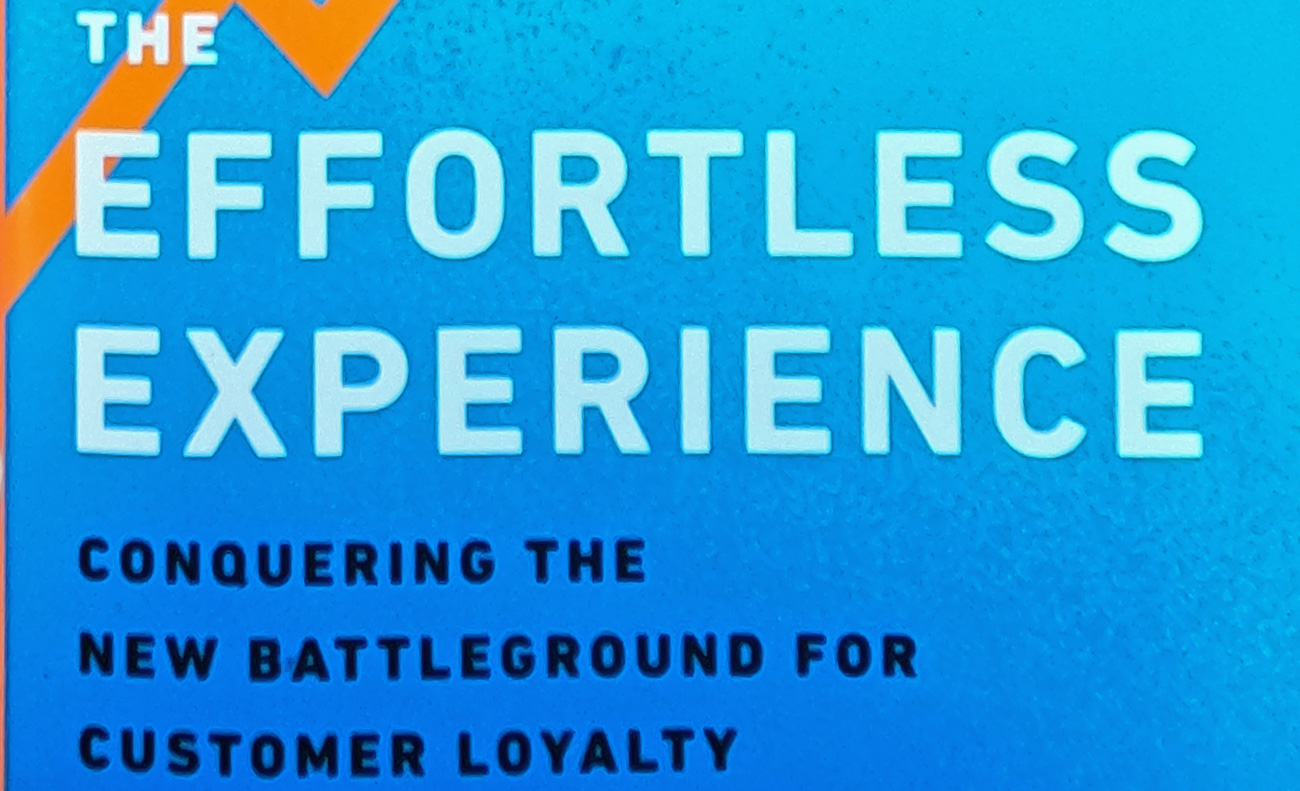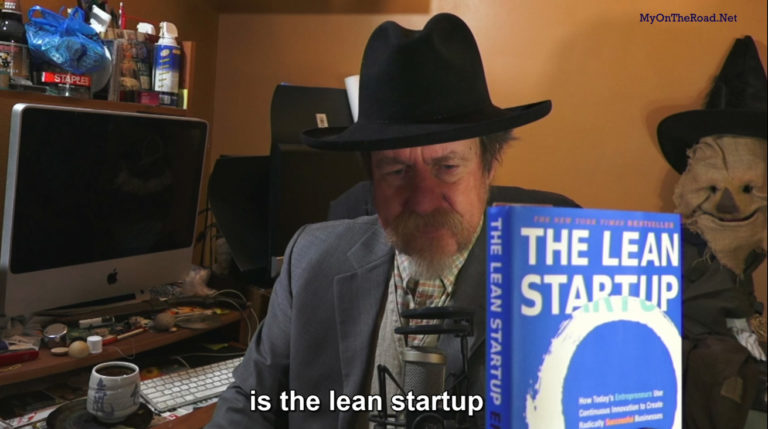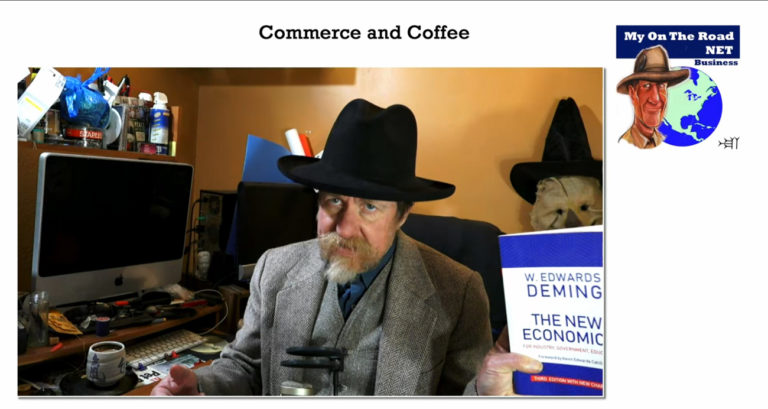The Effortless Experience Book Review
The Effortless Experience Book Review, it’s Episode 3 of Commerce and Coffee.
I am looking for a good book review format and experimenting with doing them in multiple sections. These are as much notes for my future reference as they are for others.
Let’s get on to the Effortless Experience book.
Chapters 1 and 2
This is promoted as a book about developing customer loyalty through high quality customer service. Their definition of customer loyalty is made up of three behaviors.
- Customers repurchasing your product
- Customers buying more over time
- Advocacy
The book is based on research and examples of companies successfully implementing and/or using low effort initiatives.
The researchers in the book ask companies what their strategies were for developing customer loyalty, which overwhelmingly was to exceed customers’ expectations. Often referred to as delighting the customer.
The book authors found that satisfaction or high Net Promoter Scores don’t predict loyalty. In fact they often are part of a system that measures the wrong metric and hides the real problem. As Edwards Deming points out, the problem is often with the system and not the frontline people. However, the frontline people are the ones who need to bear the brunt of emotionally irritated customers the flawed system created.
The mere fact that a customer needed to contact customer service can decrease loyalty, even if you delight them by exceeding their expectations. In fact, the book says it’s 4 times more likely to make a customer disloyal.
What the book authors found is that customers most want their expectations met with the least amount of effort.
The key to reducing customer disloyalty was reducing customer effort.
Another thing people don’t like is repeating information they already gave.
Their research indicated that there are 4 principles of low effort service.
- Minimize channel switching. One way to do this is to increase the stickiness of self-service channels.
- Implement next issue avoidance practices. So people don’t need to call back with a new problem that very well may be related to the first problem they called about.
- Low effort companies equip their reps with advanced experience engineering tactics.
- Low effort companies develop systems that provide incentives that value the quality of the experience over speed and efficiency. We see a similar tactic used in the lean startup methodology and in the writings of Eward Deming.
What are the reasons a customer will abandon self-serve for the phone?
Here is what they found.
- The customer couldn’t find the information they needed.
- The information was there, however it was unclear.
- The customer was using the website to find the phone number.
Too many choices for self-serve solutions presented all at once increases the effort needed to take care of the problem.
It’s best to guide customers to the lowest effort channel.
Chapters 3 and 4
Repeat customer contact.
The second most common reason for repeated contact, at 24 percent, are caused by emotional triggers. This includes second guessing the answers they get. I believe the book talks more about this in a future chapter.
Again chapter 3 talks about how important next issue avoidance is. You need to think a few moves ahead of the current problem, anticipating what else the customer needs to know. Then pre-solve the problem by preparing the customer.
Giving customers valuable information they didn’t even know they needed is part of the challenger sales methodology, which is another book one of the authors wrote.
One company in the book implemented an event model instead of a per call model. Instead of doing first call resolution they wanted to decrease calls for the entire event. They established an event or issue taxonomy to map where effort would be most productive.
The issue taxonomy sounds a whole lot like an issue flowchart to me.
They then picked the issues where they could get the biggest return on their effort. This is something the Lean Startup book also recommends.
They then suggest asking what could the last rep who talked to this customer have done to prevent the next service call? I think tactfully modifying the 5 whys to use in these situations would also help.
This company only forward-resolves one step or problem at a time. Then they only pick the highest value probability issue. The criteria is that a problem has to occur at least 20 percent of the time. Finally they don’t try to forward-resolve very complex problems. .
The book suggests measuring reps call backs within 7 days and for company records to track in 30 day increments.
These authors found that a customer’s perception of how difficult or irritating the experience was accounted for two thirds of the overall effort equation.
How the customer feels about the interaction matters about twice as much as what they actually have to do during the interaction.
The solution to how a customer feels about an interaction is best controlled with what the book calls experience engineering.
Positive verbal behavior produces big rewards.
Be positive.
This can mean a lot of things to different people. I think it may be more helpful to talk in a positive manner that guides the experience. To speak in a positive manner is a skill that can be taught. Speaking in a positive manner can also be applied throughout a business. It just makes sense that changing how people speak, making it less confrontational and/or negative, will have a positive impact on both customers and company staff.
Experience engineering actively guides the customer through an interaction that is designed to anticipate the emotional response and soften the aversive nature of the experience.
The book suggests using a personality-based issue resolution model, which matches the service to a personality profile of the customer, based on verbal behavior. It then gives a simple way to classify the different personality profiles.
The personality profiles are built around
- The Feeler
- The entertainer
- The thinker
- The controller.
Then they have different service approaches for each type of personality.
Chapter 5 and 6
What the researchers in the book found is that there are four categories or factors that had the biggest impact on increasing a reps performance.
- First is advanced problem solving
- Next is basic skills and behaviors
- Third is emotional intelligence.
- Fourth and the most profound factor for increasing a reps performance is what the book calls the Control Quotient. This is not so much taking control as it is self-control and holding up under pressure.
One of the most important elements of Control Quotient is bouncing back from a negative interaction. Part of bouncing back is handling the next customer like nothing bad ever happened. The rep starts fresh, without dragging the last negative experience into the new conversation.
In dog training we call this trait, recovery. After a dog is stressed one of the most important signs of a stable temperament is good recovery.
I have found many similarities between employees with high and poor performance in an office environment similar to dogs on a training field. Mostly on how they deal with and adapt to stress.
What these researchers found is that the raw Control Quotient for individuals in this position was within a reasonable degree of variation. Meaning the variation was within what was needed to do the job. However, an individual’s performance in different company settings was quite different. What they found is the policies and systems an individual operates in is what makes the biggest difference.
What these researchers found contributes the most to a high control quotient is the work environment.
The elements for an effective work environment are:
- Trust in the rep’s judgment
- The rep understanding and alignment with company goals.
- A strong rep peer support network.
Chapter 6 and 7
Measuring customer effort
The question they use on their customer effort survey is “the company made it easy for me to handle my issue,” and it’s judged on a 1 to 7 scale implemented as a standard agree/disagree scale.
Making low effort stick.

To make low effort, part of the work culture, it can’t be seen as the flavor of the month. The first step is there needs to be a compelling reason to change. The book calls this a change story, I call it the change narrative. Without a compelling change story the initiative can be seen as a flavor of the month. The, “we’re just trying something new,” with a lot of extra work from a management directive. You need to communicate why a new approach is needed. It needs to teach a new way of thinking.
Right before covid, I had a sales job that issued one of these directives. It was done in a very poor and haphazard manner. But the managers were told to punish those who did not obey. All the sales people thought it was created by a very inexperienced intern.
The first week of stay at home orders I started developing an online learning resource to teach the dreaded new system in a way people could at least learn with enough precision to keep managers at bay. Then I was going to rework it into something people could use. In theory it was not a bad idea, but it was very poorly executed and caused everyone a lot of grief. Within my sales team I was its biggest advocate and its biggest critic, all at the same time. During informal conversations I supported the concept with peers, but with the manager, I pointed out the folly of its design and execution.
Some elements of a compelling change narrative,
- What is happening now and how the job and industry is changing. Emphasize what frontline workers experience while bringing clarity to the problem that calls for change.
- The old approach, why it was done that way and why it used to work
- Why the old approach no longer works. Show and tell how things have changed.
- A new way to think about service. Show some evidence that the amount of effort needed by a customer influences loyalty and profits.
- The solution. Laying out your vision and long term commitment.
What I found interesting is that companies that focused on training had lower performing rep than companies that focused on coaching.
The book suggests that training is best used to orient staff to new ideas and service approaches.
One approach they found effective was to train reps on the ten most common problems, then have them start working the phones as soon as possible.
Another tactic is to assign a call coach to a group of reps who can help them through calls. The call coach can also come in and take over tough calls when needed.
An exercise to make the rep more sensitive to effort reduction is writing a recent customer service experience they’ve had on a whiteboard.
The areas to be explored are:
- DO
What they did - Feel
How they felt - Effort
How much effort they perceived the experience involved.
You may need to change the system to change your reps behavior. Within many customer service systems are processes that prevent reps from reducing customer effort. Some examples are checklists and call time.
An organization needs to introduce customer effort reduction in small steps. Offer your reps a small choice of high impact activities to choose from when interacting with customers.
Chapter 8
The last chapter talks about making the whole customer journey a low effort experience.
Three recommendations are,
- Make it easy for customers to navigate information about the brand.
- Provide information that is trustworthy.
- Make it simple for customers to weigh their options.
They found businesses that gain customers’ greatest loyalty are the ones that are “easy to do business with.”







